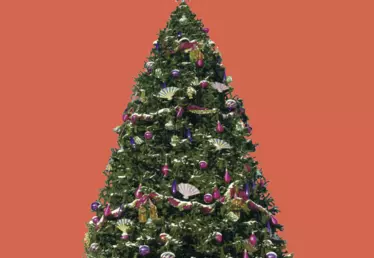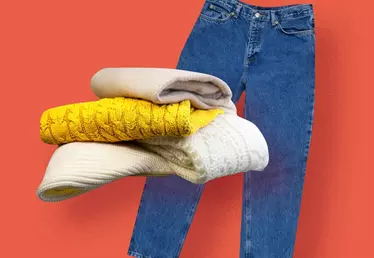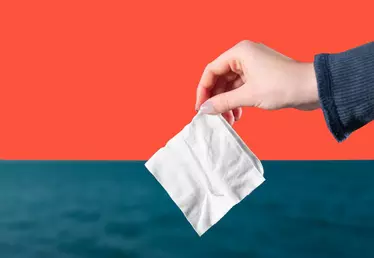

24 hours in the life of a pair of jeans
5 min
Jeans are the most worn item of clothing in the world – but they are also an ecological and social disaster. Most people don’t realize that the jeans with which they adorn their legs have often traveled all across the world already – with dire consequences for the environment. Not to mention the dangerous conditions often besetting the textile workers who manufacture their favorite trousers.
Yet this story, like so many others, had a fairy tale beginning. Blue jeans’ commercial saga started in the United States in the late 19th century, when leading brands like Lee Cooper or Levi's had the idea of democratizing this inexpensive and practical garment by selling it to farmers, factory workers and miners, conquering whole of America by the 1920s-1930s and Europe after the Second World War.
Today, more than 2 billion pairs of jeans are sold worldwide every year – or
73
units each and every second of the day!
The problem can best be understood by going back to its origins, namely the fields where cotton, the primary material used in jeans, is grown. The main issue, according to Amutha Karuppuchamy, Assistant Professor of Textiles and Clothing Design at India’s Bharathiar University, is the extreme pollution that cotton plantations generate.
"Data shows that the world’s main producers - China, India and the United States – use more pesticides, specifically chemical fertilisers, with cotton than most other crops. This is unsustainable. (...) Similarly, cotton production consumes huge quantities of water; degrades and erodes the soil; and causes deforestation and a loss of habitat”.
After raw cotton is harvested, it gets sent to a spinning mill, following which the cotton threads are dyed and then woven into a canvas called “denim”. The dye often involves adding synthetic products that contain heavy metals and chlorine, substances that are dangerous for human health, especially when discharged into waterways – something that, as shown in the documentary River Blue (2017), occurs notably in Southeast Asia. The fabric resulting from this process is then cut into pieces before being assembled in the final product.
Otherwise, “embellishing” or “ennobling” a pair of jeans, i.e. giving them an artificially faded appearance, is also problematic. The practice is polluting and also dangerous for workers. It generally involves sandblasting, i.e. spraying fabric with sand at very high speeds – the end result being that workers often breathe in fine silica particles. Despite being banned in many countries, there are places (like China, for instance) where sandblasting is still being done, albeit clandestinely.
In other countries (like Tunisia) where jeans are assembled, the work involves adding buttons and zippers – but also rivets, which were historically used to strengthen the garment but have little more than an aesthetic function today, rooted in the product’s fetishistic appeal to farmers and factory workers. The problem here, according to Sarah Gray (analyst at British environmental NGO Wrap) is that, “These trimmings make recycling harder and often explain why things go wrong, like when used jeans are thrown away instead of being recycled.”
At this stage in the life of a pair of jeans, the denim is likely to have already travelled more than most people do through the whole of their lifetime
Largely because each of the aforementioned process stages tends to be carried out in a different country. Cotton grown in China will often be spun in Pakistan; the ensuing threads then dyed in Bulgaria before being woven in Taiwan; and the product then assembled and “embellished” in Bangladesh or China before being sold in Europe. Figures from France’s ADEME Environment and Energy Management Agency show that an average pair of jeans travels 65,000 kilometers between the cotton field where it originates and the end user’s wardrobe. The resulting consumption of fossil fuels and emission of greenhouse gasses is enormous.
Another major problem is the huge quantity of water required to produce
a pair
of jeans – estimated at 3,781 liters by the United Nations Environment Programme (UNEP) or the equivalent of
31 bathtubs!
The good news is that there are ways that people can continue to wear their beloved jeans while engaging in a more sustainable mode of consumption. The first option is to simply buy fewer jeans but ensure that they are better quality. This can be achieved by boycotting fast fashion producers and low-cost products in general. Another possibility is to only buy used jeans. Above all, green consumers should only purchase untreated denim.
Wider improvements will only be achievable, however, if the fashion industry gets on board. Although progress has been slow, there are some hopeful signs. One can be seen in the The Jean Redesign guide that the Ellen MacArthur Foundation has published, where the emphasis is on designing products adapted to the circular economy; made out of organic cotton; featuring reinforced seams and alternatives to rivets; and/or embroidered in a way that facilitates their ultimate recycling. Some brands also offer more eco-friendly jeans, again made out of organic cotton but also out of linen or Refibra (recycled denim) – and as often as possible, produced locally.
Share it:












